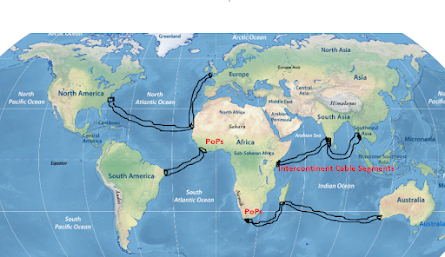A community model for rural connectivity, Green Energy access and Small scale industrialization.
To deliver socio economic transformation of population in rural areas requires two key enablers - Broadband access and electricity. Broadband technologies deliver internet access to unlock access to services while electricity delivers lighting and powers multi-sectoral industrialization.
Telco and Infrastructure companies in many African countries, and with patient capital from development partners are trying to bridge the unconnected, unserved and underserved Gap in rural areas with lowcost, smart, site infrastructure solutions paving the way for a digital transformation journey for these areas.
There is still some way to go, because based on the GSMA State of mobile Internet Connectivity Report 2021, Broadband penetration in Subsaharan Africa stands at 28%, with 210m people still unconnected.
This is compounded by the fact that the cost of extending Hydro electricity is still very high, estimated in the range of USD20,000-30,000 per Kilometre. According to an IEA World Energy Outlook Report 2020, 578m people in subsaharan Africa are not connected to the grid, with the electrification rate still at 29%.
In subsaharan Africa, a big percentage live in rural areas, with a low Purchasing power, and predominantly subsistence agriculture as the main economic activity.
However, as the adage goes, that for every problem or challenge, there is a solution, we can unlock the potential of rural areas through Solar / Green electrification of a multitude of communities by using the basic design principle of a telecom site - the cell radius principle.
Cell radius is the coverage area in which the population lives. This is the same population that requires electricity for lighting houses, a rural network economy of markets, kiosks, Rolex stalls(specific to Uganda), schools, small machines for agricultural product value addition etc.
The Cell radius or coverage area is arrived at following prior Geomarketing and other feasibility studies by Telco/InfraCos to arrive at a specific site location that serves many users/subscribers in all coverage directions - and is forecast to generate enough revenue in the medium term.
Africa is also blessed with abundant sunshine, so the potential for Solar PV systems is massive.. In subsaharan Africa a 1KWp Solar system will generate anywhere between 125-166KWh per month. Some studies by IRENA suggest that the theoretical generation potential is upwards of 660000TWh per annum.
Based on the two above realities, its therefore feasible to roll-out decentralized Solar mini grid systems, away from the central grid, by using the Telco site infrastructure as a Green power station to electrify many rural communities.
So, what defines a rural site?
We can define a rural site as one within a cell radius of 1-15KM, with a population density of anywhere between 1-10,000subscribers, and 50-100KM from an urban center or a hydro electricity substation. It would therefore make sense to use the rural site infrastructure as a Solar green source, especially since the cost of electricity transmission, to cover this distance to a community of say 100-3000people would be high ( $1-3m). When you add up lost revenue from transmission losses(average of 20%+), due to age of the grid and other operational gaps, a sound business case for Natural/Green Sources of power becomes possible.
 |
| Green Model for Rural Electrification & Broadband Access |
We can therefore instead invest the capex into upgrading the existing rural site infrastructure from say a 10KW system(ideally a multi-tenant site) to 0.5-1MWp Solar Mini grid systems, implement tiered community electrification and broadband access models that deliver an accelerated rural transformation agenda. The cost of say a 1MWp solar grid system today, complete with storage is between $1.8-2m which is manageable.
The source and structure of the financing for this venture may be varied, from Grants to public private partnership models with development partners and Telco/Infrastructure companies, supported by an enabling country regulatory framework.



Comments
Post a Comment